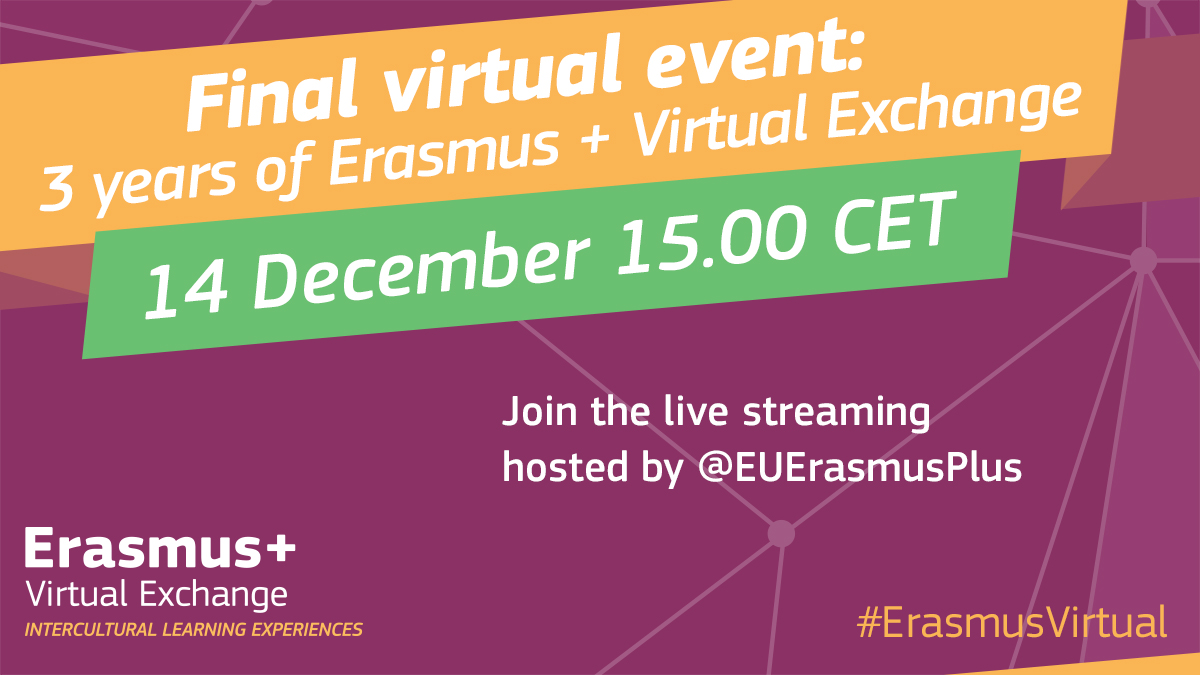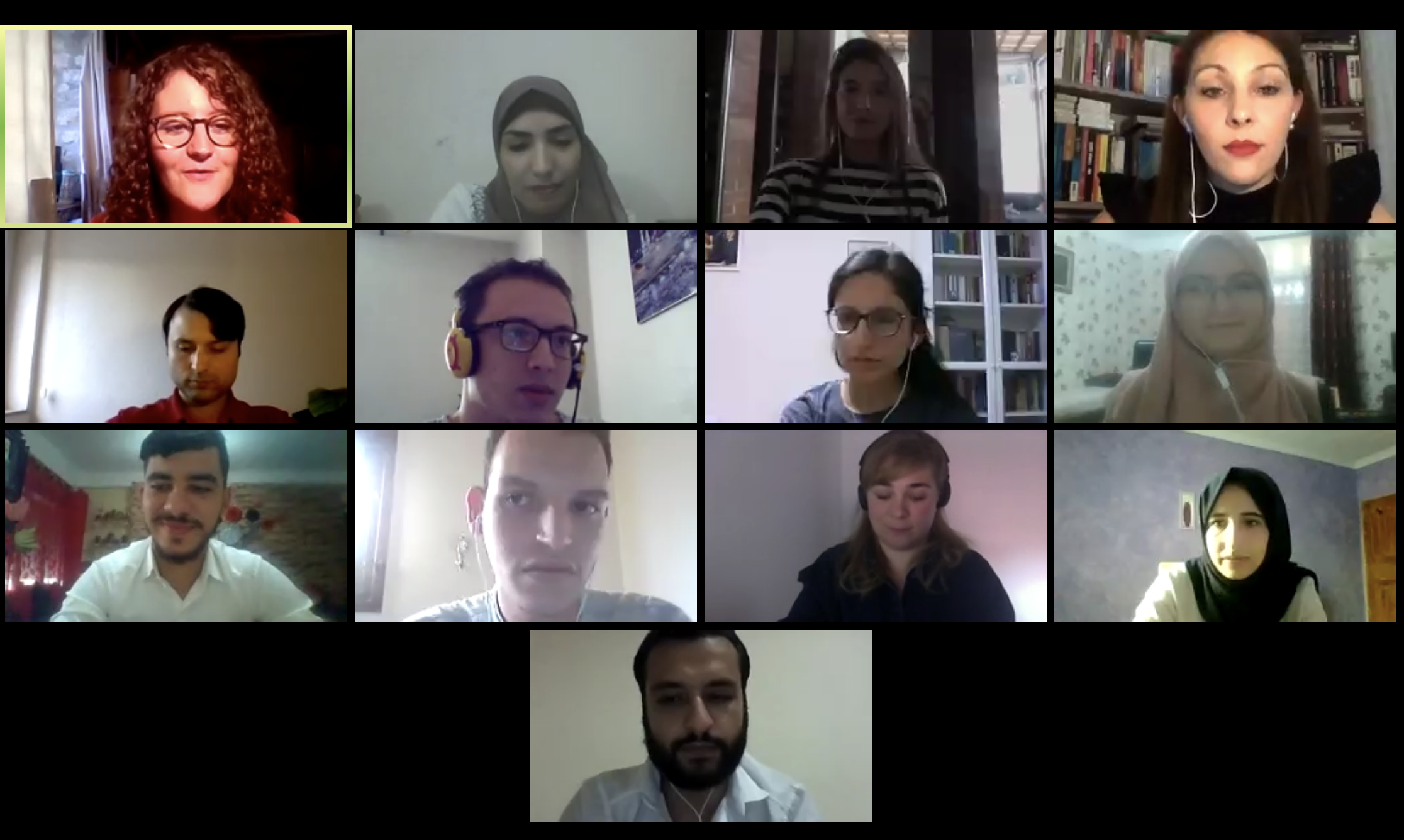“Crossing borders without travel: Virtual Exchange practices for students”

Senior lecturer, Judit Háhn (University of Jyväskylä, Department of Language and Communication Studies in Finland) has received an award from the TINEL Erasmus+ project for the best e-learning/blended learning practice in higher education. The title of her work was “Crossing borders without travel: Virtual Exchange practices for students”.
Since embarking on her Virtual Exchange journey in 2012 (when she was still working at a Hungarian university), Judit has undertaken at least 10 international collaborations with colleagues from the Czech Republic, Poland, Finland, Japan and Singapore.
She’s now a seasoned Virtual Exchange collaborator and knows the ropes well, but it hasn’t always been that way.
“The first online exchange I organised was a complete disaster”, she smiles, “and it was called video-conferencing back then. I didn’t know whether to laugh or cry as it didn’t meet my expectations at all.”
She describes how her group of students were all in one room together in front of a video screen, facing the other group of students in their room at their university similarly arranged. “The idea was that the students would learn about student life in another country - in this case it was Hungary and Finland - so it was supposed to be a cultural as well as a linguistic experience. But the camera equipment we had was so clumsy and I wasn’t good at moving around the room, zooming in and out, and it was an incredibly clunky session,” she laughs.
However, Judit wasn’t put off by this experience and subsequently teamed up with an experienced colleague, Irena Podlásková from the Czech Republic, who acted as her mentor. The duo ended up having many fruitful exchange experiences and the projects just got better and better. “I learned everything I know from this colleague and I really appreciate how she took the lead initially and allowed me to grow into the role.”
Judit shares her thoughts on the most important things to bear in mind when setting up an international, intercultural Virtual Exchange project:
1 – “Plan ahead and give yourself plenty of time. At least half a year, so you can discuss with your colleague”. This is crucial, says Judit, as timing and scheduling can mean the success or failure of the whole exchange.
2- “Pay attention to holidays and exams as these can cause big issues and problems. If students disappear for 2 weeks in the middle of a project, even if your colleague encourages them, they won’t do what is required. Judit is very clear on this. “Even if students promise, they won’t do it”, she says. “Students must be on campus so they can devote time to this.”
3 – Perfect partnership - Your colleague should be just as committed and engaged as you are. Keep fixed deadlines and communicate with the students regularly. If one of you keeps going on conferences or is absent for any reason, students on the other side will notice. “You don’t want to feel you have to push your colleague either. You must both be on the same page.”
What about keeping the students motivated? Judit explains:
“First explain clearly what they can learn from the experience and the advantages of such projects. The learning objectives must be very clear. Explain to them how they can make use of what they learn, those soft skills like collaboration, digital skills, communication skills. If the project is part of course work, then tell them they need to do it to get their grades. Make it so there is no escape or offer them credits for doing the course.”
Judit says that Virtual Exchange is quite “ad hoc” and sometimes projects develop organically: “It is very much up to the tutor to work out how to collaborate with a partner. It’s extra work for sure, so you have to be committed”.
“I give a proper certificate at the end, not a general one. Every individual who participates gets one with details of the tasks they completed and all official signatures and stamps from the university so they can use it in job applications.”
“We also make sure that the students need to produce something tangible to demonstrate what they did together. This makes it possible to evaluate their performance with your project partner.
You have to be generous though and not too strict. You have to bear in mind that this is a new experience for them, working online with digital tools and collaborating with people they don’t know. It can be very challenging and you really need to be mindful of in your assessments.
“I also ask them to keep a learning diary for self-reflection which I read and I find this is a good way to assess them too.”
“The Virtual Exchange projects would not have succeeded without my enthusiastic and committed international colleagues,'' says Judit. She would like to thank Anna Kimberley (Finland), Irena Podlásková (Czech Republic), Katarzyna Radke (Poland), Mary Ellis and Mark Wilkinson (Singapore), Mariko Kondo and Victoria Muehleisen (Japan) for their support and collaboration.
Join the trainings to develop your own Virtual Exchange project.



